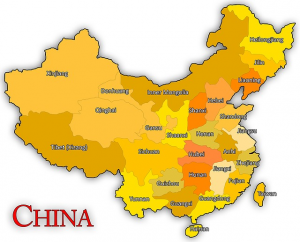
Some 50 years ago now, Chinese researchers began to understand the health risks associated with low selenium status. Cross-sectional studies showed an association between low selenium concentrations in cereal grains, the low selenium status of local citizens, and the incidence of Keshan disease, a heart disease with high death rates. The administration of selenium supplements in intervention studies resulted in significant reductions in the incidence of Keshan disease [Chen 2012]. Selenium status is one of the main factors contributing to the development of Keshan disease.
Selenium and Kashin-Beck disease
Not long afterwards, Chinese researchers realized that Kashin-Beck disease, a disease of the bone, is prevalent in regions of China and Tibet that are poor in selenium. The researchers saw that a deficiency of selenium and iodine was a common factor Kashin-Beck disease regions [Yao 2011].
Supplementation with selenium and iodine produced positive results in most regions with previously high rates of Kashin-Beck disease. However, there were a few smaller regions in which the supplementation with selenium and iodine could not totally eliminate the disease. There may be additional factors at work in the development of the disease beyond inadequate selenium and iodine status [Yao 2011].
The Chinese researchers concluded that the role of selenium and iodine in preventing Kashin-Beck disease involves the role of selenium in antioxidant protection and maintenance of thyroid function [Yao 2011].
Selenium and cancer studies in China
Sometime later, after they had observed an association between low selenium intakes and Keshan disease and Kashin-Beck disease, Chinese researchers began to investigate the relationship between selenium deficiency and the risk of cancer. In an earlier article on this website, we have looked at the results of the big National Cancer Institute studies conducted in Linxian province in China.
The data from the Linxian nutrition intervention studies showed that daily supplementation with a micronutrient combination of selenium and vitamin E and beta-carotene significantly reduced total mortality, total cancer mortality, and gastric cancer mortality [Blot].
The Qidong selenium treatment studies
In Qidong county north of Shanghai, researchers carried out randomized controlled studies similar to the Linxian nutrition intervention studies. Qidong was known to be the region with the second highest rate of primary liver cancer in China.
The results of the Qidong studies showed that daily supplementation with 200 micrograms of selenized yeast tablets for a four-year period was associated with significantly reduced risk of death from primary liver cancer.
After cessation of the treatment with high-selenium yeast supplements, the cancer incidence rate climbed back up to the pre-selenium treatment level [Yu 1997].
In a related randomized controlled study with an eight-year follow-up period, Yu reported that the individuals randomized to receive selenized table salt with their meals had a 35% reduction in the incidence of primary liver cancer as compared to the individuals who received a non-selenized table salt with their meals.
High-selenium yeast tablets are a better option
High-selenium yeast tablets are a better option. Many people do not want to increase their daily intakes of sodium — table salt in the form of sodium selenite — in order to increase their selenium intakes.
A second Qidong selenium and cancer study
In a separate three-year study in Qidong county, 1,112 study participants received 500 micrograms of selenium daily while 953 study participants received a placebo tablet daily. The blood selenium concentration and the glutathione peroxidase activity increased significantly in the study participants receiving the daily selenium supplements [Li 2000].
The results:
- The incidence rate of new liver cancer cases was significantly lower in the selenium treatment group than in the placebo control group.
- The prevalence rate of micronuclei in peripheral blood lymphocytes was significantly lower in the selenium treatment group than in the placebo control group.
Note: A micronucleus (plural: micronuclei) is a nucleus that forms during cell division when the daughter cell does not get a chromosome or a fragment of a chromosome fully incorporated as it should. The presence of micronuclei is a sign of some sort of destructive effect on the cell’s DNA.
Conclusion: selenium and cancer
Supplementation of individuals in low-selenium regions of the world may be necessary on a continuous basis to ensure a chemopreventive effect against various forms of cancer [Yu 1997]. The protective effect of the selenium against cancer seems to fall away with time once the supplementation is stopped.
Daily supplementation with a well-formulated high-selenium yeast tablet is simple and affordable.
Sources
Blot, W. J., Li, J. Y., Taylor, P. R., Guo, W., Dawsey, S., & Wang, G. Q. (1993). Nutrition intervention trials in Linxian, China: supplementation with specific vitamin/mineral combinations, cancer incidence, and disease-specific mortality in the general population. Journal of The National Cancer Institute, 85(18), 1483-1492.
Chen, J. (2012). An original discovery: selenium deficiency and Keshan disease (an endemic heart disease). Asia Pacific Journal of Clinical Nutrition, 21(3), 320-326.
Li, W., Zhu, Y., Yan, X., Zhang, Q., Li, X., Ni, Z., & … Zhu, J. (2000). [The prevention of primary liver cancer by selenium in high risk populations]. Zhonghua Yu Fang Yi Xue Za Zhi [Chinese Journal of Preventive Medicine], 34(6), 336-338.
Yao, Y., Pei, F., & Kang, P. (2011). Selenium, iodine, and the relation with Kashin-Beck disease. Nutrition (Burbank, Los Angeles County, Calif.), 27(11-12), 1095-1100.
Yu, S. Y., Zhu, Y. J., & Li, W. G. (1997). Protective role of selenium against hepatitis B virus and primary liver cancer in Qidong. Biological Trace Element Research, 56(1), 117-124.
Disclaimer: The information presented in this review article is not intended as medical advice and should not be construed as such.
